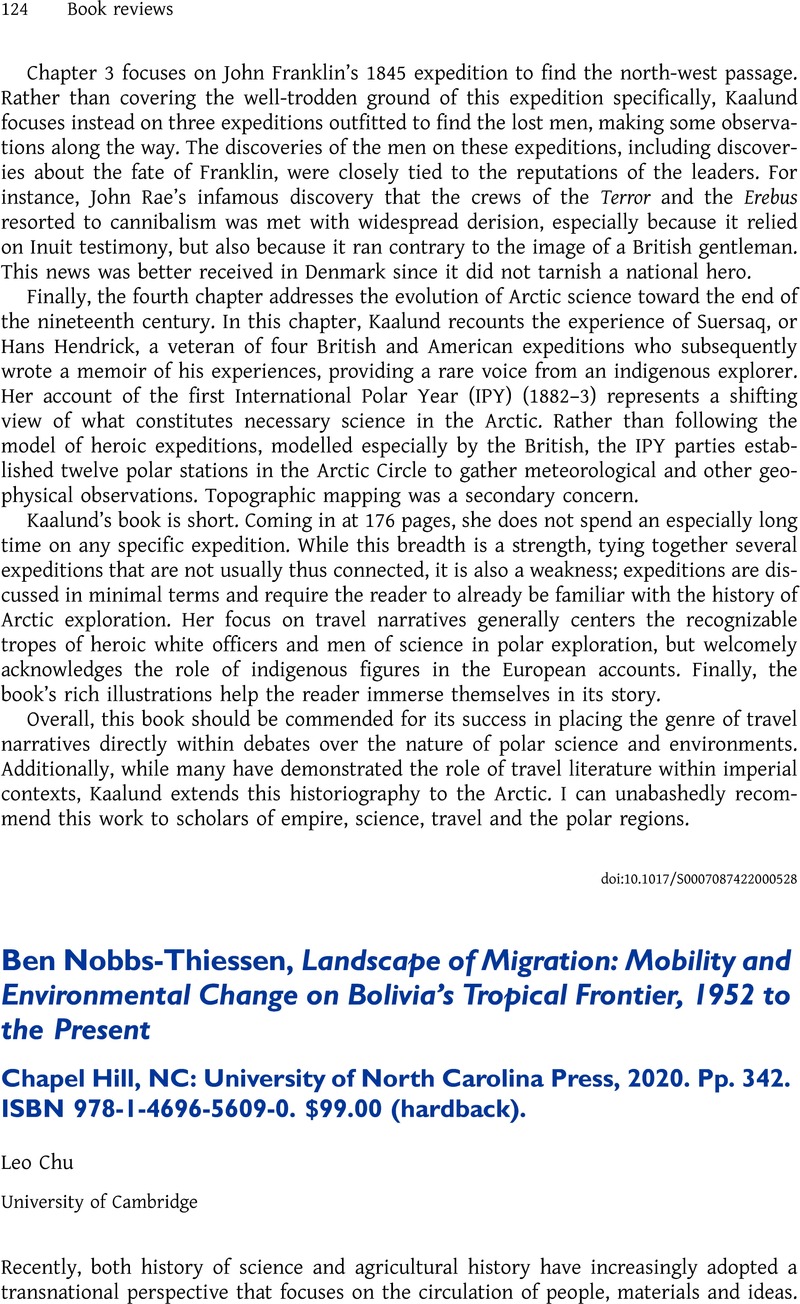No CrossRef data available.
Article contents
Ben Nobbs-Thiessen, Landscape of Migration: Mobility and Environmental Change on Bolivia's Tropical Frontier, 1952 to the Present Chapel Hill, NC: University of North Carolina Press, 2020. Pp. 342. ISBN 978-1-4696-5609-0. $99.00 (hardback).
Review products
Ben Nobbs-Thiessen, Landscape of Migration: Mobility and Environmental Change on Bolivia's Tropical Frontier, 1952 to the Present Chapel Hill, NC: University of North Carolina Press, 2020. Pp. 342. ISBN 978-1-4696-5609-0. $99.00 (hardback).
Published online by Cambridge University Press: 22 March 2023
Abstract
An abstract is not available for this content so a preview has been provided. Please use the Get access link above for information on how to access this content.

- Type
- Book Review
- Information
- Copyright
- Copyright © The Author(s), 2023. Published by Cambridge University Press on behalf of British Society for the History of Science



